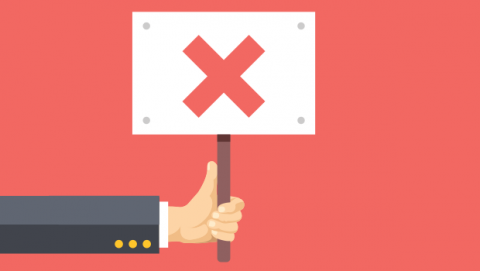Bad office etiquette is easy to spot: Making personal phone calls in public spaces, and reheating smelly lunches in the office kitchen, for example.
It’s also true on LinkedIn: When someone uses the site inappropriately – whether it’s posting updates too frequently, flooding your inbox with messages, or using an archaic profile picture –people take notice.
“Especially for CIOs, LinkedIn is an excellent place to help promote both your personal and corporate brand,” says Viveka von Rosen, cofounder of digital sales company Vengreso and book author (LinkedIn: 101 Ways To Rock Your Personal Brand.) “It can help to establish you as a thought leader within your industry and bring your company more visibility, when you do it right.”
[ Want to get more from LinkedIn? Read our related article, LinkedIn tips: 5 strategies for time-pressed IT leaders. ]
But you don’t want your personal brand (or your company’s) associated with clueless manners. So where do people go wrong? Listen to what your fellow CIOs say about LinkedIn etiquette mistakes and what you can do to avoid them:
1. Your LinkedIn profile picture is old or inaccurate
Let’s start with that picture of yours: When did you last update it?
“Keep your profile updated and current,” says Jay Ferro, acting chief information and technology officer for TransPerfect. “This includes having a picture on your profile. This is your online ‘face’ to potential employers, business partners, employees, etc. and it makes you more ‘real’.”
That said, keep it professional, Ferro says. “You in a fishing boat, a pretty sunset, you at a party, etc. won’t cut it. You don’t need to drop money on a professional photo shoot (although there’s nothing wrong with that), but having a friend snap a few current headshots should be relatively easy to do.”
Using a picture from 10 years ago can breed distrust, says von Rosen. “There’s a huge disconnect when your picture doesn’t represent you,” she says. “People rely on that to identify you when you’re at conferences or meetings with vendors. Having an accurate, professional picture helps you build trust with others.”
- To upload or change your profile picture, click the Me icon at the top of your LinkedIn page, then click View profile.
- Click your profile photo near the top of the page to change, edit, and preview it. When you’re done, click Apply.
On a related note: “If you’re going to use a ‘vanity’ URL (i.e. www.linkedin.com/in/jacobferro), keep it professional as well…. Don’t get cute with ‘cloudguru99’ or that kind of junk,” Ferro says.
2. You feed the trolls
“There are always people who will take contrary and critical positions, often to just to evoke a reaction, says Michael Hermus, CTO at the Department of Homeland Security. “My number-one rule is always take the high road: Either don't engage at all, or engage politely and professionally if there is a legitimate need to respond.”
“Don't get defensive, combative, or caught in a game of trading insults,” Hermus says. Sometimes, people get surprised by how quickly such rants can devolve – even on LinkedIn.
Remember, this is a professional ecosystem, Ferro says. “Keep the political rants, religious pontifications, sexist memes, and bullying/insults to yourself,” Ferro says. “While I’m at it, keep them off Twitter and Facebook too. You know, just stop being a troll in general. Strong opinions are fine, but be civil and play nice.”
3. You don’t customize invitations to connect
When you send someone an invite to connect, you have two options: Quick-send the invite or include a personal note with it. When you’re connecting with time-stretched IT leaders, standing out matters.
Your personalized message should note how you know the person, when or where you met, and why you’d like to add them as a connection, von Rosen says. For example, your note might read: “Hi Mary, it was nice meeting you at the Charlotte CIO of the Year Awards in June. I look forward to connecting with you to follow all the great work you’re doing in the nonprofit sector.”
Have you ever copied and pasted the same invite to a bunch of people – perhaps hastily?
That bugs CIOs like Ferro. “Spam/copy and paste messages: I have never responded and I won’t,” Ferro says. “Even worse, some copy/pasted messages somehow aren’t proofread ... i.e. ‘Dear Carl,’ (when my name is Jay).”
4. You abuse your network
LinkedIn is about building and maintaining professional relationships – not taking advantage of them. Don’t add your connections to your weekly newsletter without their permission, don’t drown them with sales messages, and don’t tag them in irrelevant content, social media experts advise. These actions reflect poorly on you as a professional.
“Sometimes people on LinkedIn forget their manners,” von Rosen says. “You need to remember that LinkedIn is a network of your peers, and it’s important not to take advantage of that. Treat them as you want to be treated.”
Not everyone takes this advice to heart, however. If one of your connections is overstepping their boundaries, you can block them, which removes the person as a connection. To do this, visit their LinkedIn profile, click the "More" button below their photo, and select Report/Block.
5. You overshare
Networking is one of your most powerful tools for professional development: It can help you recruit talent, find business partnerships, shape conversations happening in your industry, and stay up to speed on new technologies.
There are, however, limits to all these activities: You don’t want to be the person oversharing and cluttering your connections’ feeds, liking every post for the sake of appearing active, or sending invitations to connect with anyone and everyone.
Instead, aim to strike a balance with your LinkedIn activity, von Rosen advises – and don’t use it at the same clip as Twitter. “This isn’t Facebook or Twitter or Instagram, so don’t approach LinkedIn as you would those,” she says.
6. You build a profile and vanish
Just as doing too much on LinkedIn is considered a breach of etiquette, so is participating too little. Don’t use the social network with an “if you build it they will come” attitude, von Rosen says. To get the most of LinkedIn, you need to work it.
“LinkedIn isn’t just a resume, and it isn’t just for job seekers. You need to move your profile from resume to resource and mold it into a way for people to learn more about you and your company,” she says.
Indeed, IT leaders often overlook how much power their name – and LinkedIn profile – has when it comes to recruiting efforts, as Paul Wallenberg, unit manager of technology services at talent company LaSalle Network, recently told us. “Every person researching your company or wanting to work there will visit your profile, and this is an opportunity for you to demonstrate why the best talent should want to join your team,” Wallenberg says. (Read the full article: LinkedIn tips: 5 strategies for time-pressed IT leaders.)
He advises updating the profile quarterly to inform people about your team’s culture, projects you’ve completed, team wins, and projects on the horizon.
“Don’t think of LinkedIn as just another tool that you need to learn: Think of it as another platform for communicating, just like email or even the phone,” adds von Rosen.
Do you follow The Enterprisers Project on LinkedIn? We'll give you practical advice for IT leaders – and nothing else. Follow us at https://www.linkedin.com/showcase/the-enterprisers-project.






